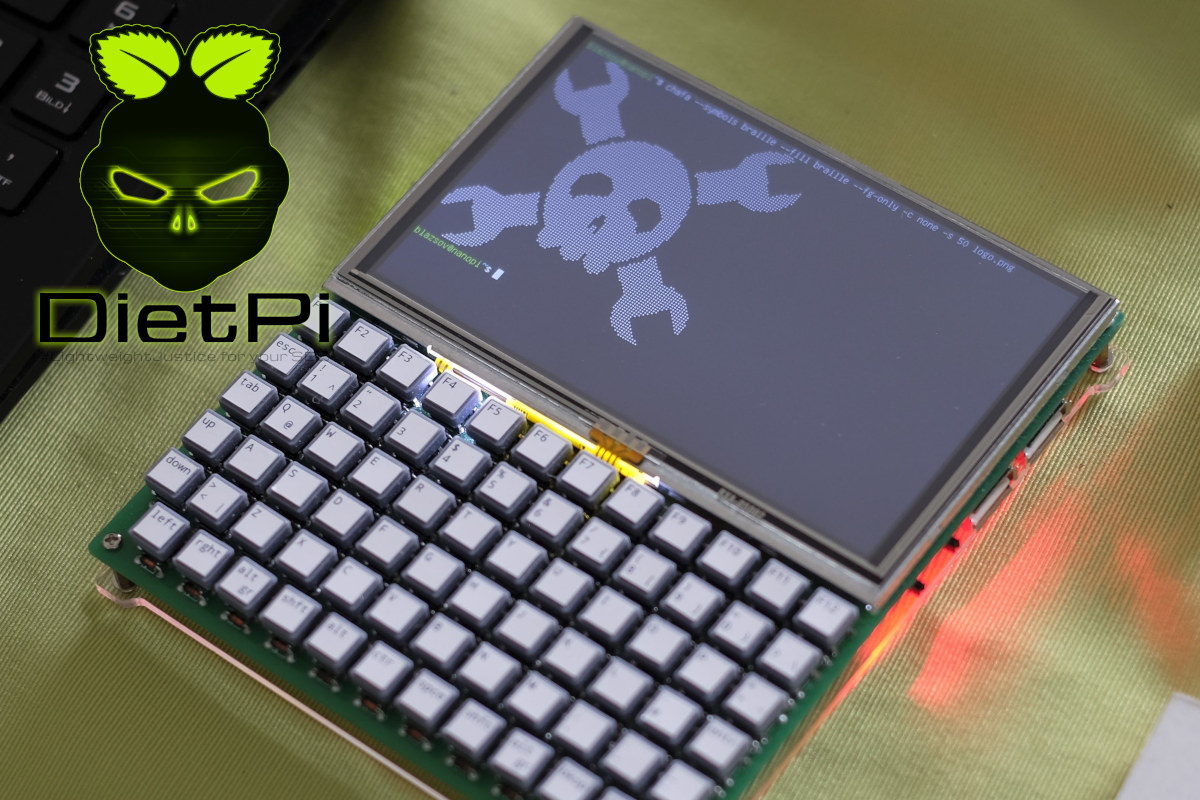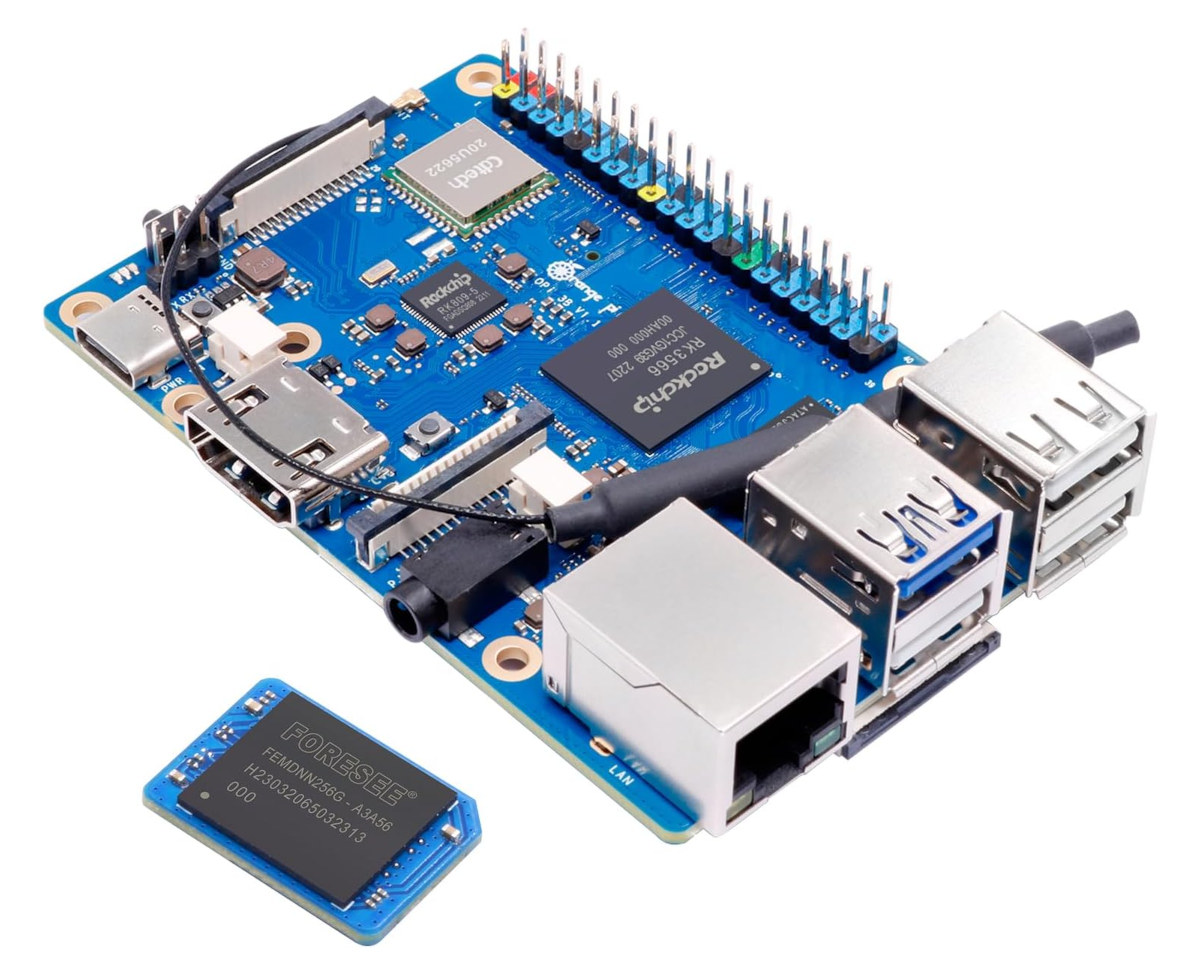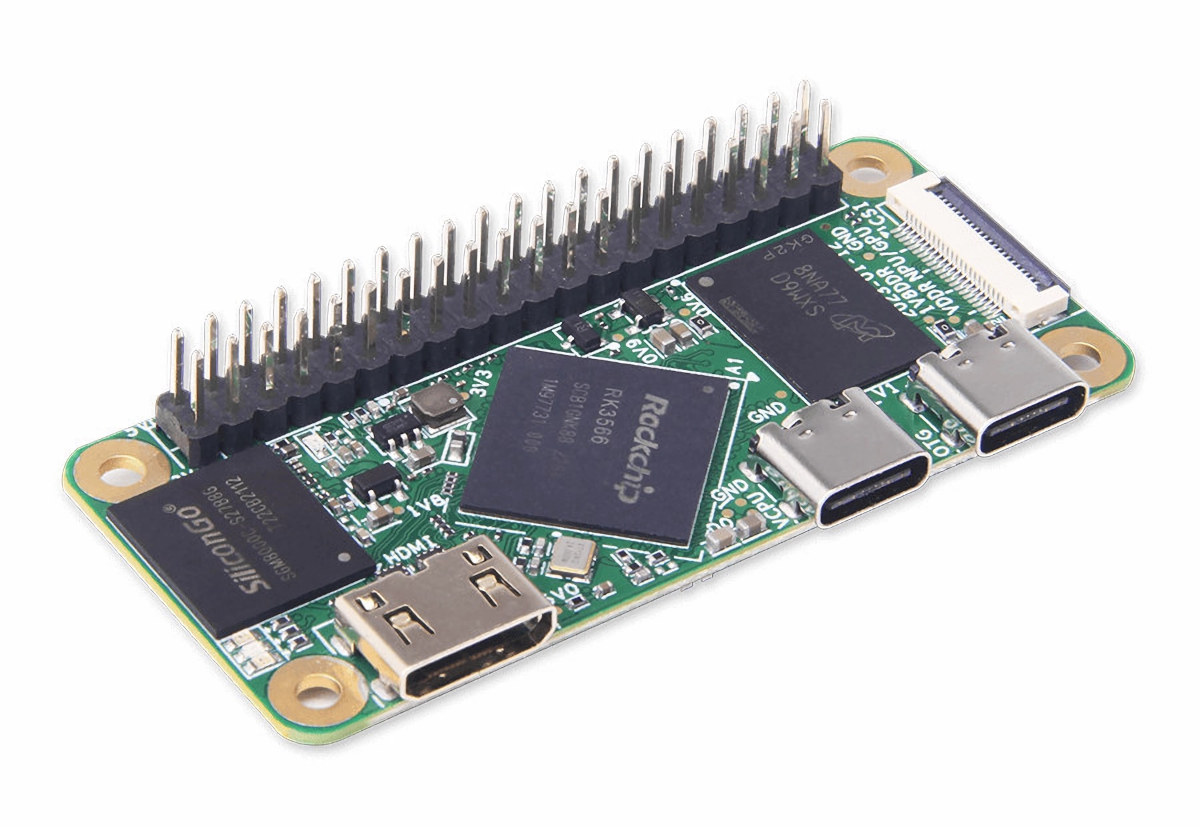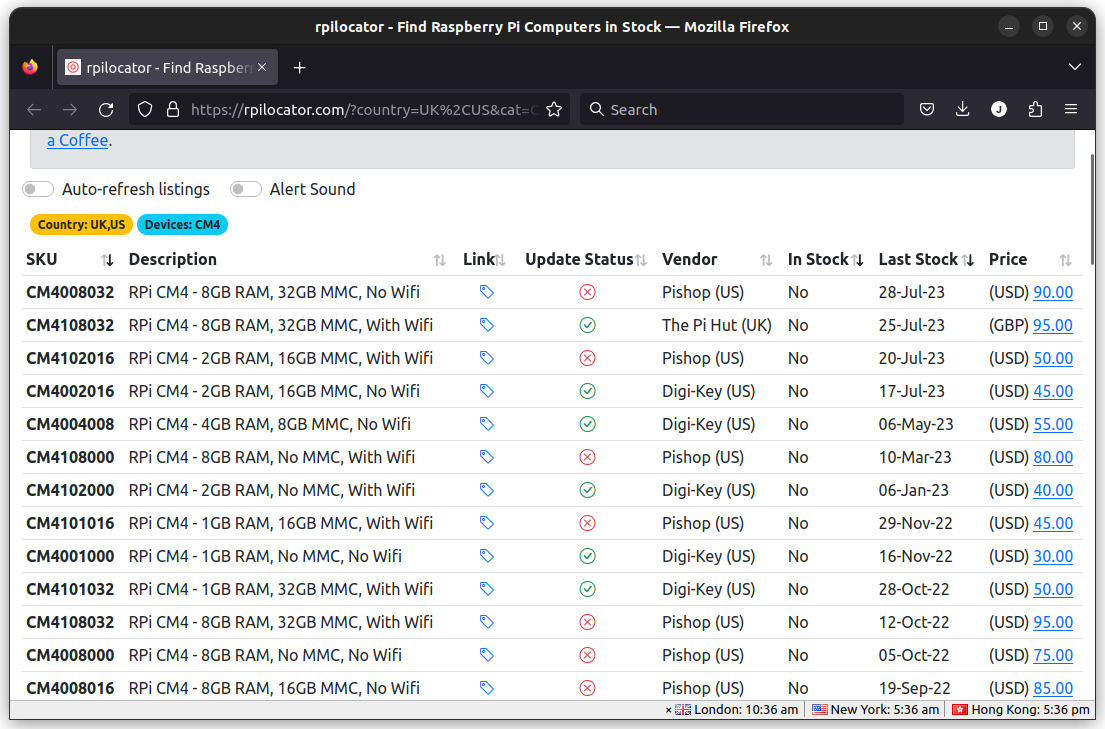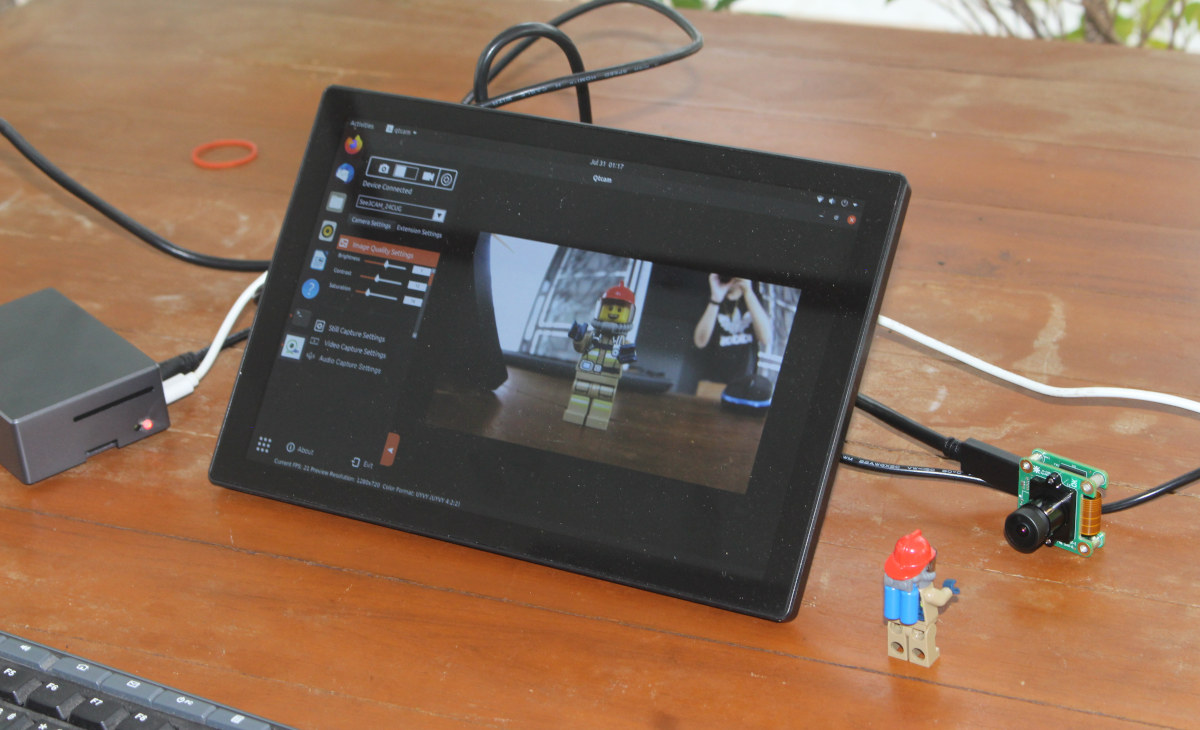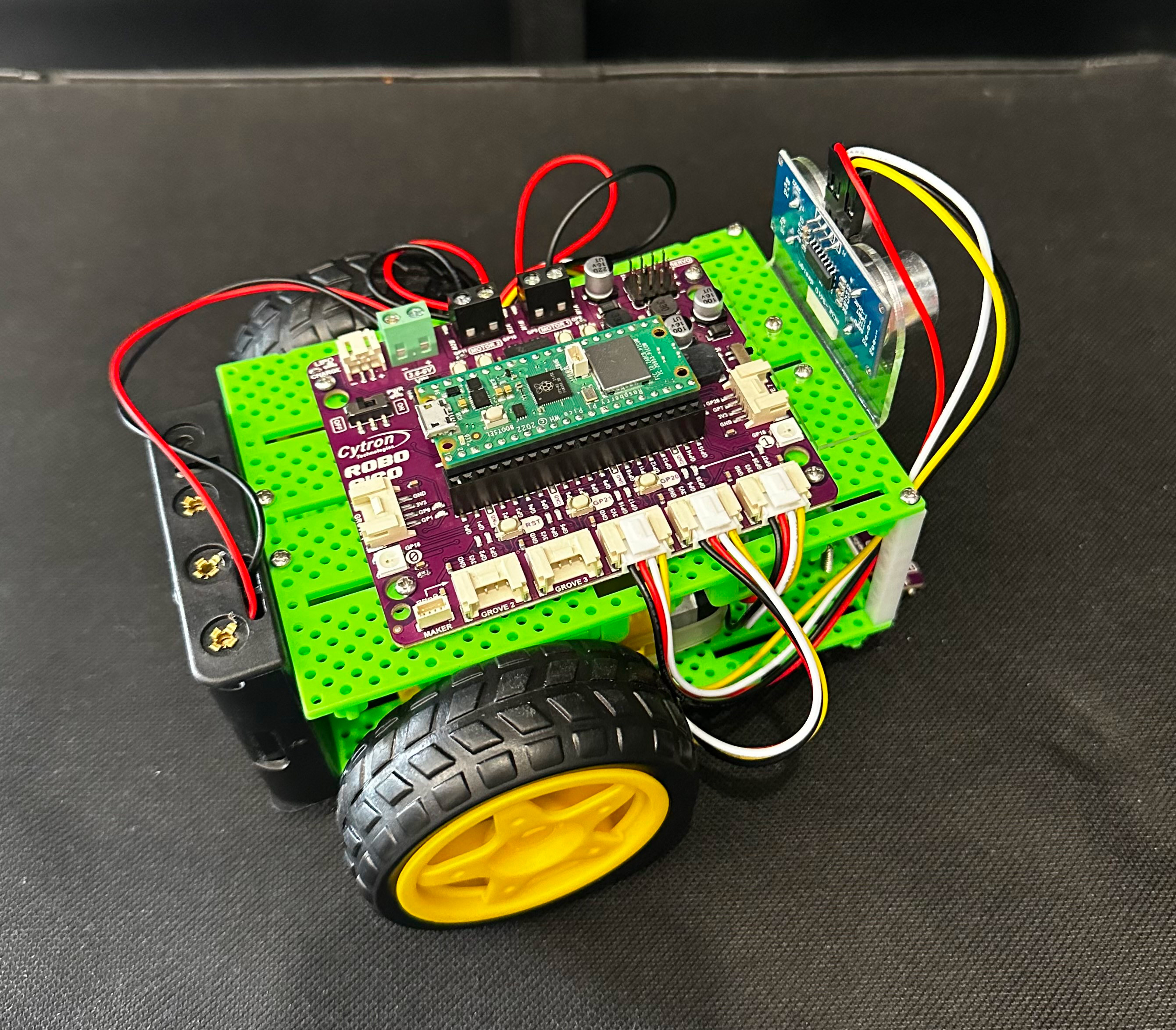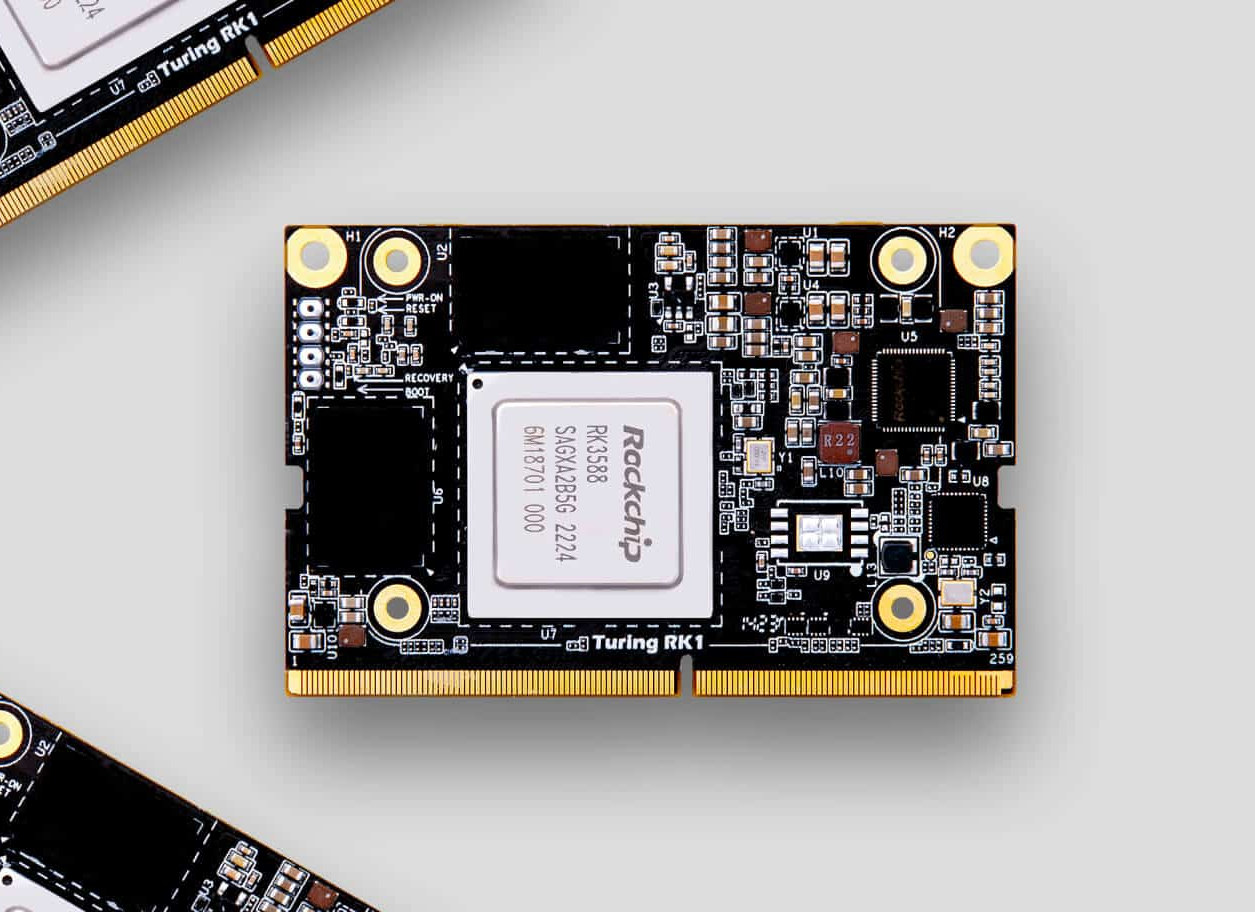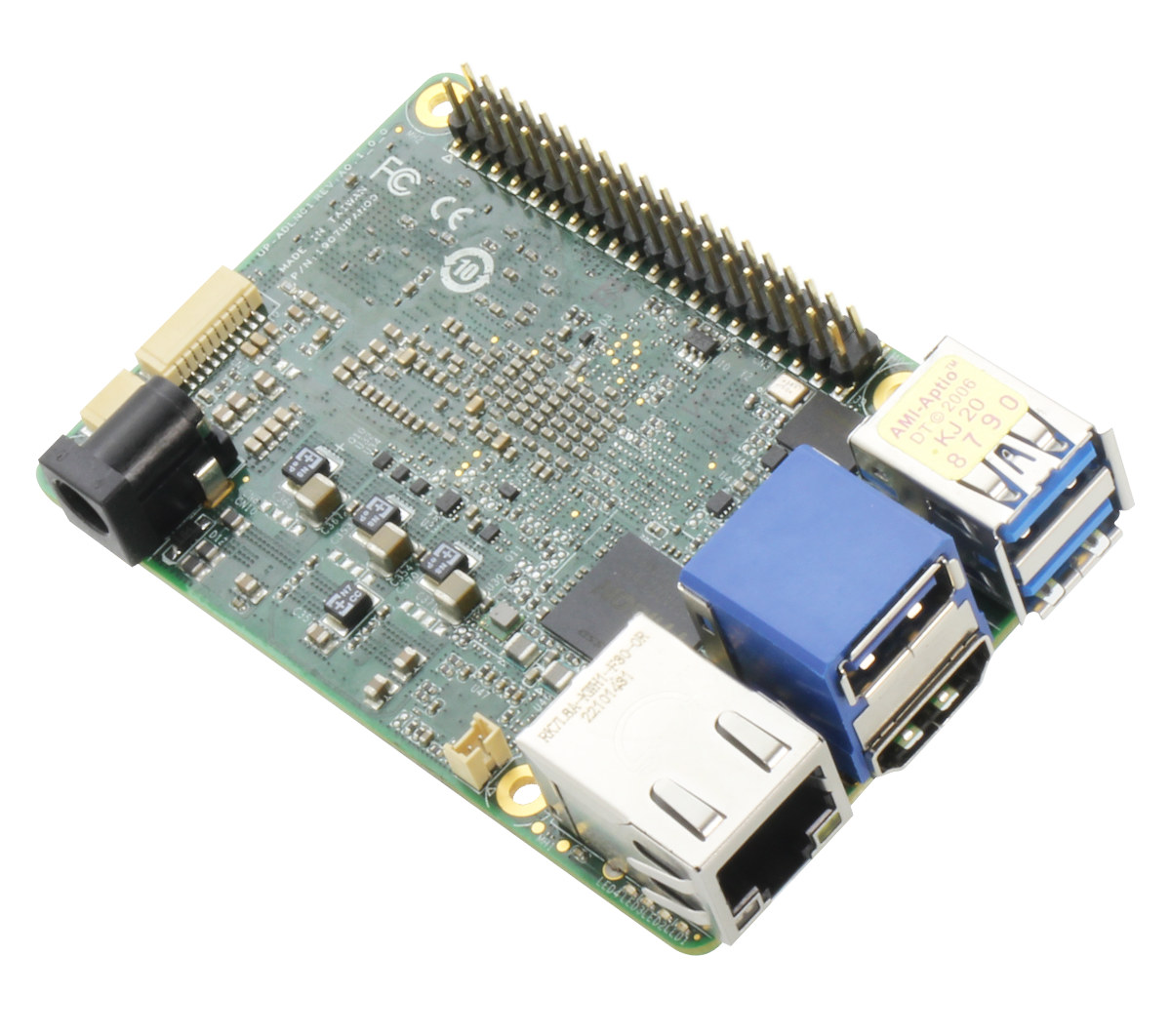The latest DietPi v8.20 release of the lightweight Debian-based Linux distribution for SBCs and server systems was outed on July 29, 2023, and on a separate note, a DIY handheld Linux terminal based on the NanoPi Neo Air SBC and running DietPi has been found on the interwebs. DietPi v8.20 release The project team released the new DietPi v8.20 on July 29th, 2023 with the following highlights: Homebridge: New software package bringing Apple Homekit support Kernel updates for Pine64 Quartz64 – Linux 6.4.7 and enabled support for the NFS kernel server FriendlyELEC NanoPi R5S/R5C/R6S series – Linux 5.10.160 StarFive VisionFive 2 RISC-V SBC – Linux 5.15.123 WiFi Hotspot: Enhanced DHCP default settings Fixes and updates for DietPi-LogClear, DietPi-Dashboard, DietPi-LetsEncrypt, PaperMC, vaultwarden, etc… The full changelog can be found on the DietPi website and the source code is hosted on GitHub. NanoPi Neo Air handheld Linux terminal running DietPi While it’s […]
Orange Pi 3B – A Rockchip RK3566 SBC with an M.2 NVMe/SATA SSD socket, up to 8GB RAM
Orange Pi 3B is a new Rockchip RK3566 SBC that’s like a supercharged Raspberry Pi 3B board with the same form factor, but with a faster processor, up to 8GB RAM, and support for multiple storage options with a microSD card slot, an eMMC flash socket, an M.2 Key-M socket for NVMe (PCIe 2.1) or SATA III SSDs, as well as an SPI flash that should enable features like network boot. The board also features HDMI 2.0 and eDP display intefaces, a Gigabit Ethernet port, a WiFI 5 and Bluetooth 5.0 wireless module, four USB ports, MIPI DSI and CSI connector, and the 40-pin Raspberry Pi GPIO header. It’s powered through a USB-C port taking 5V instead of the micro USB port found in the Raspberry Pi 3B. Orange Pi 3B specifications: SoC – Rockchip RK3566 CPU – Quad-core Cortex-A55 processor @ up to 1.8 GHz GPU – Arm Mali-G52 […]
Geniatech XPI-3566-ZERO – A Rockchip RK3566 SBC that follows Raspberry Pi Zero form factor
Geniatech XPI-3566-ZERO is a Rockchip RK3566 powered single board computer (SBC) that provides an alternative to the Raspberry Pi Zero 2W with a more powerful quad-core 1.8 GHz Arm Cortex-A55 processor, support for 4Kp60 video playback and output, WiFi 5 and Bluetooth 5.0, a built-in eMMC flash, and so on. Geniatech XPI is a family of SBCs that closely follows the design of various Raspberry Pi boards, and after introducing the Raspberry Pi 3 Model B-sized XPI-3566 board last year, the company has now designed a more small Rockchip RK3566 SBC that follows the Raspberry Pi Zero form factor. Geniatech XPI-3566-ZERO specifications: SoC – Rockchip RK3566 quad-core Cortex-A55 processor @ up to 1.8 GHz with Arm Mali-G52 2EE GPU, 1 TOPS AI accelerator System Memory – 512MB LPDDR4 (up to 8GB optional) Storage – 8GB eMMC flash (up to 128GB optional) Video Output – mini HDMI 2.0 up to 4Kp60 […]
Raspberry Pi supplies are improving, but trust may be hard to rebuild with makers
Last December, Eben Upon provided an update about Raspberry Pi availability and expected “unlimited supplied” by H2 2023. Nine months later, Raspberry Pi supplies have indeed improved a lot. Still, some makers with small-volume production have already moved on, and are using alternative solutions. This seems especially true for products based on Raspberry Pi CM4 modules. Tom’s Hardware has just had a fresh look at the Raspberry Pi supply situation, and based on Eben’s tweets noted an increased number of Raspberry Pi boards had shipped in 2023. Eben said June was the second-best month ever for Raspberry Pi Trading with 788,000 units sold, and July looks to breach if the one million units a month is reached, beating the March 2021 records of 814k units. He further expanded saying 119k Zero boards, of which 33k Zero 2 boards (almost entirely consumer), and estimated around 250-400ku went to the retail market. […]
e-con systems See3CAM_24CUG USB 3.1 global shutter camera review
e-con Systems See3CAM_24CUG a full HD color global shutter USB 3.1 Gen 1 camera based on an Onsemi AR0234CS CMOS image sensor capable of capturing moving scenes at up to 120 fps. This global shutter camera is especially useful for robotics and other applications that may require a high frame rate such as Automatic Number Plate Recognition (ANPR), Autonomous Mobile Robots (AMR), gesture recognition, drones, barcode scanners, factory automation, conveyor monitoring cameras, and traffic monitoring systems. e-con Systems sent a See3CAM_24CUG USB global shutter camera sample to CNX Software for review. I’ll go through an unboxing before testing in Ubuntu with both an AMD Ryzen 7 2700U laptop and a Raspberry Pi 4 single board computer. It happens to be based on the same sensor as the e-CAM20_CURB camera for Raspberry Pi 4 that we reviewed last year. See3CAM_24CUG specifications ON Semiconductor AR0234CS CMOS sensor with 1/2.6″ optical form-factor Global […]
Robo Pico review – A Raspberry Pi Pico W-based motor & sensor control board tested with BocoBot robotic kit
Cytron Robo Pico is a carrier board for the Raspberry Pi Pico (W) specially designed for robotics & IoT applications with a 2-channel DC motor driver, four servo motor ports, and seven Grove I/O connectors to connect various sensors and/or actuators. When the company asked us to review the Robo Pico board, I noticed they had a car robotic kit based on the board called the BocoBot that comes with installation videos and five tutorials including obstacle avoidance movement with ultrasonic sensors, light search, line following, and WiFi remote control. So I asked for the full kit to make the review more fun and interesting. Robo Pico board Robo Pico specifications: Supported MCU board – Raspberry Pi Pico/Pico W and compatible Motor control 2x DC Motor terminals with Motor status LEDs for each motor terminal 2x motor test buttons for each motor terminal Header to connect to 4x servos Expansion […]
Turing RK1 RK3588 system-on-module for cluster boards is now available (for pre-order)
Turing Pi has been making mini-ITX cluster boards for Raspberry Pi CM4 and NVIDIA Jetson modules for over four years, but last year, the company teased their own Turing RK1 system-on-module based on a powerful Rockchip RK3588 Arm processor with 6 TOPS NPU while launching the Turing Pi 2 cluster board on Kickstarter and raising over 2 million dollars in the process. The Turing RK1 is now available for pre-order with the 8GB RAM going for $130, the 16GB model for $170, and you’d have to spend $260 if you need 32GB RAM. Most people will probably want to add $10 to purchase the RK1 heatsink with a built-in fan as well. Pre-orders are expected to start shipping on October 27. Turing RK1 specifications: SoC – Rockchip RK3588 CPU – Octa-core processor with 4x Arm Cortex-A76 @ 2.4 GHz, 4x Arm Cortex-A55 @ 1.8 GHz GPU – Arm Mali-G610 MP4 […]
UP 7000 is a powerful x86 alternative to the Raspberry Pi 4 SBC with an Intel Processor N50/N97/N100 CPU
AAEON UP 7000 is an x86 single board computer with a layout similar to the Raspberry Pi 4 but based on a more powerful Intel Processor N50, N97, or N100 Alder Lake-N SoC with Gigabit Ethernet, three USB 3.2 Gen 2 ports, HDMI 1.4 video output, and a 40-pin GPIO header. Not to be confused with the larger UP Squared Pro 7000 also powered by an Alder Lake-N processor, the UP 7000 is an update to the UP 4000 SBC with an Intel Apollo Lake processor introduced just last year. The new fanless board also comes with up to 8GB LPDDR5, 64GB eMMC flash, and an onboard TPM 2.0. UP 7000 (SKU: UP-ADLN01) specifications: Alder Lake-N SoC Intel Processor N50 dual-core processor up to 3.4 GHz with 6MB cache, 16EU Intel UHD Graphics Gen 12 @ 750 MHz; TDP: 6W Intel Processor N97 quad-core processor up to 3.6 GHz with […]


